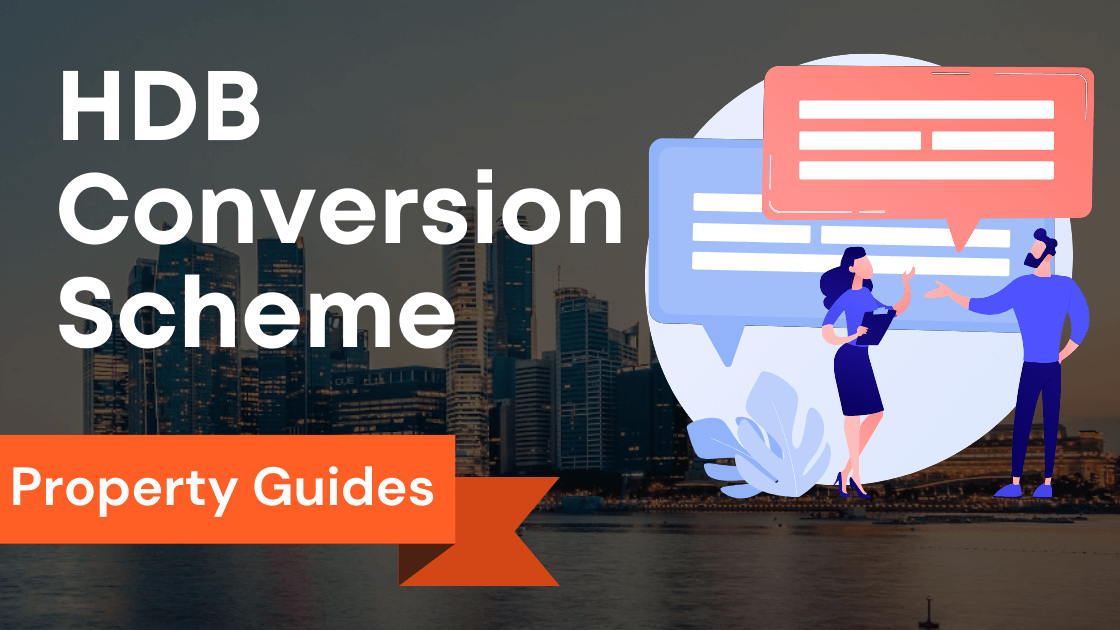What is a Request for Proposal (RFP)?

A Request for Proposal (RFP) is a document that organizations use to solicit proposals from potential contractors or service providers.
It serves as a formal invitation for vendors to submit a proposal outlining their qualifications, capabilities, and proposed solutions to meet the organization’s specific needs.
The RFP provides detailed information about the project or service requirements and allows vendors to understand the scope of work and submit competitive bids.
Definition of RFP
The Request for Proposal (RFP) is a formal document issued by an organization to outline its requirements for a particular project or service.
It provides a detailed description of what the organization is looking for and requests potential vendors to submit proposals that address these requirements.
The RFP typically includes information about the organization, project objectives, scope of work, evaluation criteria, and any other specific details necessary for vendors to prepare their proposals.
The purpose of issuing an RFP is to gather comprehensive and competitive proposals from qualified vendors, allowing the organization to evaluate and compare different solutions and select the best-suited provider for the project or service.
When to use an RFP
Organizations use RFPs for various reasons and in different scenarios.
Here are some situations where using an RFP is beneficial:
- Complex projects: When the project or service requirements are intricate and require specialized expertise, utilizing an RFP ensures that vendors have a clear understanding of the project’s scope and can propose suitable solutions.
- Seeking innovative or unique solutions: If the organization is looking for new ideas or out-of-the-box solutions, an RFP allows vendors to present their creative proposals, expanding the range of possibilities.
- Large-scale contracts: For significant contracts or long-term partnerships, issuing an RFP allows organizations to assess various factors such as cost, qualifications, experience, and approach before making the final selection.
- Transparency and fairness: Using an RFP process ensures fairness and transparency in vendor selection, as all interested parties have an equal opportunity to participate and compete for the project or service.
Benefits of using an RFP
There are several benefits to using an RFP when soliciting proposals for a project or service:
- Clear requirements: The RFP provides detailed specifications and expectations, ensuring that vendors have a comprehensive understanding of the project or service requirements.
- Access to a wider pool of vendors: By publicly posting the RFP, organizations can attract a larger number of potential contractors or service providers, increasing the chances of finding the most qualified and competitive bids.
- Competition and cost-effectiveness: The competitive nature of the RFP process encourages vendors to offer their best solutions at competitive prices, driving down costs for the organization.
- Objective evaluation: The RFP allows the organization to establish clear evaluation criteria, enabling an objective assessment of vendor proposals based on predefined factors such as qualifications, experience, pricing, and technical abilities.
- Structured selection process: Using an RFP facilitates a structured and organized vendor selection process, ensuring that all proposals are evaluated consistently and fairly.
- Customized solutions: Vendors have the opportunity to propose tailored solutions that address the organization’s specific needs, resulting in a more customized approach to the project or service.
http://www.youtube.com/watch?v=nS7XDoia0RU
In conclusion, an RFP is a valuable tool for organizations to solicit proposals and select the best-suited vendor for a particular project or service.
By clearly outlining the requirements, opening the competition to a wider pool of vendors, and enabling an objective evaluation process, organizations can leverage the benefits of using an RFP to achieve successful outcomes.
Key Takeaways
- RFP Purpose: An RFP is a formal document used to solicit proposals from potential contractors or service providers, outlining project requirements.
- When to Use RFP: RFPs are beneficial for complex projects, seeking innovative solutions, large-scale contracts, and ensuring transparency and fairness.
- Benefits of RFP: Benefits of using an RFP include clear requirements, access to a wider pool of vendors, cost-effectiveness, and a structured selection process.
- RFP Structure: A well-structured RFP includes sections like Introduction, Project Scope, Timeline, Evaluation Criteria, Submission Requirements, Terms and Conditions, and Contact Information.
- RFP Content: RFP content should provide a comprehensive overview of project requirements, including process, soliciting proposals, terms, and evaluation.
- RFP Tips: Tips for writing an RFP include clarity, considering the vendor’s perspective, involving stakeholders, creating an RFP review team, and setting realistic deadlines.
- RFP Template: Using an RFP template simplifies the writing process and ensures consistency in RFP structure.
- RFP Process Steps: The RFP process involves defining the process, stating the scope of work, announcing the project, specifying costs, and detailing project deadlines and milestones.
- Evaluating RFP Responses: Evaluate RFP responses by defining clear evaluation criteria, scoring criteria, and having a structured decision-making process.
- Selection Criteria: Selection criteria include RFP requirements, alignment with project goals, and clear understanding of RFP requirements.
How to Write an RFP

Writing a Request for Proposal (RFP) can be a daunting task, but with the right structure, content, and tips, you can effectively communicate your project requirements and attract qualified vendors.
Here, we will guide you through the process of writing an RFP, providing valuable insights and tips along the way.
RFP Structure
The structure of an RFP is crucial in ensuring clarity and consistency.
While there is no one-size-fits-all template, a well-structured RFP typically includes the following sections:
- Introduction: Clearly state the purpose of the RFP, provide background information about your organization, and explain the project or service requirements.
- Project Scope: Define the scope of work, deliverables, and expected outcomes. Include any specific technical or functional requirements that the vendors need to address.
- Timeline and Milestones: Provide a timeline for the project, including key milestones and deadlines. This helps vendors understand the project’s timeline and plan their proposals accordingly.
- Evaluation Criteria: Articulate the criteria that will be used to evaluate the proposals. This can include factors such as experience, qualifications, expertise, pricing, and technical abilities.
- Submission Requirements: Clearly outline the format, structure, and content requirements for the proposals. Specify any supporting documents or certifications that vendors need to include.
- Terms and Conditions: Include any legal or contractual terms and conditions that vendors need to comply with. This section helps manage expectations and reduces the risk of misunderstandings.
- Contact Information: Provide contact details for any inquiries or clarifications regarding the RFP. This ensures open communication and allows vendors to seek clarification if needed.
RFP Content
The content of your RFP should provide a comprehensive overview of your project or service requirements.
Here are some key points to cover:
- RFP Process: Explain the RFP process, including the timeline for proposal submission, evaluation, and vendor selection. Provide a clear outline of the steps involved to ensure transparency.
- Soliciting Proposals: Clearly state the deadline for proposal submission and specify the preferred method of submission. Include any specific formats or templates that vendors should follow.
- Submit Proposals: Clearly define the information and documents that vendors should include in their proposals. This may include company background, relevant experience, work samples, and pricing details.
- Terms and Conditions: Communicate your expectations regarding contract terms, payment terms, intellectual property rights, and any other legal or compliance requirements.
- Evaluation Process: Explain how the evaluation process will be conducted, including the criteria that will be used to assess the proposals. Ensure fairness and transparency throughout the evaluation process.
- Communication: Clarify how and when vendors will be notified of the outcome of the selection process. Set clear expectations for communication and response times.
RFP Tips
Writing an RFP can be challenging, but these tips can help you streamline the process and improve the quality of the proposals you receive:
- Write an RFP with Clarity: Clearly articulate your project requirements and expectations. Avoid vague or ambiguous language that can lead to misunderstandings.
- Consider the Vendor’s Perspective: Put yourself in the shoes of potential vendors. Make sure your RFP provides all the necessary information they need to prepare a competitive proposal.
- Collaborate with Stakeholders: Involve relevant stakeholders, such as project managers or subject matter experts, in the RFP writing process. Their inputs can ensure accuracy and completeness.
- Create an RFP Review Team: Establish a team to review and evaluate the proposals. This helps distribute the workload and ensures a fair evaluation process.
- Set Realistic Deadlines: Give vendors sufficient time to prepare and submit their proposals. Rushing the process may result in incomplete or low-quality submissions.
- Provide Feedback: Offer constructive feedback to vendors, especially those who were not selected. This helps build relationships with vendors for future projects.
In conclusion, writing an effective RFP requires a structured approach, clear content, and careful consideration of vendor perspectives.
http://www.youtube.com/watch?v=0B5Pa-r8OXc
By following these guidelines and tips, you can increase the likelihood of receiving high-quality proposals from qualified vendors and ultimately select the best-suited provider for your project or service.
RFP Template

RFP Template Sections
If you’re in Singapore and need to write a request for proposal (RFP), using a well-structured template can be incredibly helpful.
An RFP template provides a framework for organizing your requirements and communicating them clearly to potential vendors.
Here are some key sections that are commonly included in an RFP template:
- Introduction: Start with a brief overview of your organization and the purpose of the RFP. Provide background information to help vendors understand your needs.
- Project Description: Clearly define the scope of work and the specific services or products you require. Include any technical or functional specifications that vendors must comply with.
- Timeline and Deliverables: Outline the expected timeline for the project, including key milestones and deadlines. This helps vendors understand the project’s time frame and plan their proposals accordingly.
- Evaluation Criteria: Clearly state the criteria that will be used to evaluate the proposals. This could include factors such as experience, qualifications, pricing, technical abilities, and any other relevant considerations.
- Submission Requirements: Specify the format and structure vendors should follow when submitting their proposals. Include any supporting documents or certifications that are necessary for their submission.
- Terms and Conditions: Clearly outline any legal or contractual terms and conditions that vendors need to comply with. This section helps manage expectations and mitigate any potential misunderstandings.
- Contact Information: Provide contact details for any inquiries or clarifications regarding the RFP. This ensures open communication and allows vendors to seek clarification if needed.
RFP Template Examples
To make your RFP template even more effective, consider including examples or suggestions for improvement.
Here are a few examples:
- Submitting Suggestions for Improvement: Encourage vendors to provide suggestions or innovative ideas that could enhance your project. This demonstrates their creativity and shows that they are open to new approaches.
- Submitting Proposals: Clearly define the information and documents that vendors should include in their proposals. This may include their company background, relevant experience, work samples, and pricing details.
- RFP Document: Provide a sample RFP document that showcases a well-structured and written request. This can serve as a helpful reference for vendors when preparing their proposals.
How to Use an RFP Template
Using an RFP template in Singapore can streamline the process and ensure consistency.
Here are some steps to effectively utilize an RFP template:
- RFP Preparation: Review and customize the template to reflect your specific project requirements and preferences. Tailor the language and structure to align with your organization’s branding and style.
- Request for Partnership: Publish the RFP on your website or send it directly to potential vendors. Be clear about the submission deadline and any other relevant instructions.
- Evaluation Process: Once you receive the proposals, organize a review team to carefully evaluate each submission. Use the evaluation criteria outlined in the template to assess each proposal objectively.
- Communication: Keep the lines of communication open with vendors throughout the selection process. Notify them of the outcome and provide feedback on their proposals, especially to those who were not selected.
- Implementation Process: Once you have selected a vendor, work closely with them to finalize the terms and conditions and ensure a smooth implementation of the project.
In conclusion, using an RFP template can significantly simplify the process of writing a request for a proposal in Singapore.
By including key sections, and examples, and following a structured approach, you can effectively communicate your requirements to potential vendors and increase the likelihood of receiving high-quality proposals.
RFP Process

Steps in the RFP Process
Writing a request for proposal (RFP) in Singapore involves several important steps to ensure a successful outcome.
Here are the key steps in the RFP process:
- RFP Process: Begin by defining the RFP process itself, including how vendors will be selected, the timeline for submissions, and the evaluation criteria that will be used.
- Statement of Work: Clearly outline the scope of the project in the RFP. Define the goals, deliverables, and any specific requirements or expectations.
- Submitting Proposals: Specify the format and structure vendors should follow when submitting their proposals. Clearly state the deadline for submissions and any other relevant instructions.
- Project Announcement: Advertise the RFP to attract potential vendors. Create awareness through your website, social media platforms, or targeted industry channels.
- Project Costs: State any budgetary constraints or limitations upfront to help vendors tailor their proposals accordingly.
- Project Details: Provide all relevant details about the project, including technical specifications, desired outcomes, and any necessary equipment or resources.
- Project Deadlines: Clearly define the timeline for the project, including key milestones and deadlines. This will help vendors understand the time frame and plan their proposals accordingly.
- Project Milestones: Highlight important milestones or deliverables that vendors should consider when developing their proposals.
How to Evaluate RFP Responses
Once you receive the proposals, it is essential to have a systematic process to evaluate and select the most suitable vendor.
Here’s how to evaluate RFP responses effectively:
- Evaluation Criteria: Clearly define the evaluation criteria that will be used to assess the proposals. This can include factors such as experience, qualifications, pricing, technical abilities, and any other relevant considerations.
- Final Selection: Create a structured decision-making process and involve multiple stakeholders if necessary. The selection process should be transparent and objective.
- Scoring Criteria: Develop a scoring system to objectively evaluate each proposal. Assign weights to different evaluation criteria to reflect their relative importance.
- Vendor Responses: Assess the vendors’ responses to each requirement outlined in the RFP. Evaluate how well they understand your needs and how effectively they address them.
- Scoring: Assign scores to each proposal based on the predetermined criteria. Use a scoring rubric or matrix to facilitate consistent evaluation across different proposals.
- Weighted Scoring: Apply the assigned weights to each evaluation criterion to calculate an overall score for each proposal. This will help identify the strongest contenders.
- Decision-Making Process: Engage in discussions with the evaluation team to compare scores, discuss strengths and weaknesses, and make an informed decision based on the evaluation results.
RFP Selection Criteria
When selecting vendors based on the RFP responses, it is crucial to have clear selection criteria.
These criteria will help ensure that the chosen vendor aligns with your project goals and objectives.
Here are some key points to consider:
- RFP Requirements: Ensure that each vendor’s proposal meets all the specified RFP requirements. Consider aspects such as compliance with technical specifications and adherence to the project timeline.
- Selection Criteria: Define the selection criteria that will assist in comparing and evaluating vendors objectively. This could include factors such as experience, expertise, cost-effectiveness, and the ability to meet project deadlines and milestones.
- Project Goals: Evaluate how well each vendor’s proposal aligns with the stated project goals and objectives. Look for vendors who demonstrate a clear understanding of your vision and have a strong track record in delivering similar projects.
- RFP is Clear: Assess how well vendors have understood and addressed the requirements outlined in the RFP. Evaluate their ability to interpret your needs and propose effective solutions.
In conclusion, following a structured RFP process in Singapore is essential to attract qualified vendors and ensure successful project outcomes.
Clearly defining the scope of work, evaluating proposals objectively, and considering the right selection criteria will help you identify the most suitable vendor for your project.
RFP Tips for Singapore Organizations

RFP Best Practices for Singapore Organizations
When it comes to requesting proposals for projects, Singapore organizations can benefit from following best practices to ensure successful outcomes.
Understanding the difference between an RFP and the procurement process is essential.
An RFP (Request for Proposal) is a document that outlines the project requirements and invites prospective vendors to submit proposals, while the procurement process involves the selection and acquisition of goods or services.
In the competitive bidding process, Singapore organizations should provide clear and concise instructions, including submission deadlines and evaluation criteria.
This helps ensure fair competition among potential vendors.
Procurement managers should also involve business stakeholders in defining the project’s business requirements.
This collaboration ensures that the RFP accurately reflects the organization’s needs and goals.
To make the RFP process more efficient, Singapore organizations should consider future references.
Specifying the desired format for proposals, such as including business understanding, technical capabilities, and proposed methodologies, allows for easier evaluation and comparison.
Additionally, organizations should consider regulatory requirements and include any necessary documentation or certifications as part of the RFP.
Overall, effective communication is crucial throughout the RFP process.
Clear and transparent communication with potential vendors helps establish a successful working relationship from the beginning.
Responding promptly to inquiries and providing clarification when needed ensures that vendors have a clear understanding of the requirements and can submit comprehensive proposals.
Common RFP Mistakes to Avoid
While drafting an RFP, organizations should be aware of common mistakes that can hinder the effectiveness of the process.
These mistakes include:
- Incomplete or unclear RFP documents: Incomplete or unclear RFP documents can lead to confusion and inadequate proposals. Singapore organizations should ensure that all necessary information is included and communicated.
- Overly restrictive requirements: Imposing overly restrictive requirements may limit potential bidders and prevent innovative solutions. Organizations should instead focus on describing their needs and desired outcomes while allowing vendors to propose different approaches.
- Ignoring feedback from bidders: Bidders often provide suggestions for improvement or raise concerns during the bidding process. Singapore organizations should carefully consider this feedback and incorporate relevant suggestions into the final proposal.
- Solely considering the cost of a solution: While cost is an important factor, organizations should not solely focus on the cheapest option. It is crucial to evaluate the overall value and suitability of vendors based on their capabilities, experience, and ability to meet the project’s requirements.
By avoiding these common mistakes, Singapore organizations can ensure they receive high-quality proposals that meet their needs and result in successful project outcomes.
Resources for Singapore Organizations Writing RFPs
Writing an RFP can be a complex task, but there are resources available to assist Singapore organizations in the process.
These resources can provide guidance and templates to streamline the RFP development process.
One such resource is a Request for Information (RFI), which helps organizations gather information and identify potential vendors before issuing the RFP.
RFIs can help organizations gain a better understanding of the market landscape and identify qualified vendors for future projects.
Additionally, there are numerous detailed guides available that provide step-by-step instructions on how to write an effective RFP.
These guides outline best practices, offer tips for creating comprehensive procurement documents, and provide templates that organizations can customize to their specific needs.
Another valuable resource is a definitive guide on RFPs, which covers everything from understanding the purpose of an RFP to evaluating proposals and selecting vendors.
This comprehensive guide can serve as a reference throughout the RFP process, ensuring that organizations have the necessary knowledge and tools to achieve successful outcomes.
In conclusion, following RFP best practices, avoiding common mistakes, and utilizing available resources are key factors for Singapore organizations to consider when writing RFPs.
By implementing these tips and techniques, organizations can improve the efficiency and effectiveness of their RFP process, ultimately leading to successful project outcomes.
Conclusion
After going through the entire Request for Proposal (RFP) process in Singapore, it is important to recap the key points to ensure a successful conclusion.
Keywords to Consider
During the RFP process, it is crucial to be clear about the specific products or services you are looking for.
Government agencies and organizations may publish an RFP to seek competitive bids from qualified contractors.
The RFP must clearly outline the tasks to be performed and the specifications required for the project.
Writing Your RFP
Crafting an RFP is a critical step to ensure the success of the project.
The RFP should clearly state the business needs and the desired outcome.
It is important to provide as much information as possible to enable potential bidders to understand the requirements and place bids accordingly.
A well-written RFP can drive down costs by encouraging competition and enabling bidders to offer the best and final offer.
Submitting the RFP
Once the RFP is complete, it is important to publish it publicly.
This can be done through an official website or other platforms where potential bidders can access it.
The organization should also indicate the deadline by which bids must be submitted to ensure a fair and transparent process.
Choosing the Right Contractor
Once all the bids have been received, it is important to evaluate them carefully to select the contractor that best fits the requirements of the project.
The evaluation should consider factors such as cost, qualifications, experience, and capability to deliver the desired outcome.
Integrating the New System
After choosing the contractor, it is crucial to work closely with them to integrate the new system or complete the project.
Effective communication and collaboration are essential throughout this process to ensure a smooth transition and successful implementation.
Lessons Learned and Future Improvements
Throughout the RFP process, it is important to keep track of what worked well and areas for improvement.
By identifying any shortcomings or areas for improvement, future RFPs can be crafted more effectively.
Feedback from both the customer and the contractors can provide valuable insights for future projects.
In conclusion, the RFP process in Singapore is a rigorous and meticulous process aimed at selecting the best contractor to fulfill specific project requirements.
By following the guidelines outlined in this article and considering the keywords provided, organizations can improve their chances of a successful RFP and mitigate the risk of failure in the resulting project.
Frequently Asked Questions
What is a request for proposal (RFP)?
A request for proposal (RFP) is a document that organizations use to request bids or proposals from potential suppliers for a project.
It outlines the specific requirements and needs of the organization and serves as a tool to gather information and evaluate vendors.
What is the difference between an RFP and an RFQ?
An RFP (request for proposal) is a solicitation document used to gather information and proposals from potential suppliers for a project.
On the other hand, an RFQ (request for quotation) is a business document used to request pricing information for specific products and services.
How do I write a request for a proposal?
When writing a request for a proposal, it’s important to clearly define the project objectives, scope of work, and deliverables.
You should also include evaluation criteria and any specific requirements you have.
It’s important to provide enough information for potential vendors to understand your needs and submit proposals that align with your goals.
What is a statement of work (SOW) in a request for proposal?
The statement of work (SOW) is a section in the request for proposal (RFP) document that outlines the specific tasks, activities, and deliverables that are expected from the selected vendor.
It provides a clear description of the scope of work and serves as a reference point for evaluating vendor proposals.
Why do organizations use RFPs?
Organizations use RFPs to ensure they select the right vendor for a project.
RFPs allow organizations to gather information about potential suppliers, evaluate proposals against specific criteria, and make informed decisions.
By using RFPs, organizations can ensure they find the best fit for their needs and maximize the chances of project success.
How long does the RFP review process typically take?
The length of the RFP review process can vary depending on the complexity of the project, the number of proposals received, and the review process established by the organization.
It’s important to allocate enough time for the review process to thoroughly evaluate each proposal and make a well-informed decision.
What makes a good RFP?
A good RFP is one that clearly and effectively communicates the organization’s needs and requirements.
It should provide sufficient information to allow potential vendors to understand the project, submit relevant proposals, and demonstrate their capabilities.
Additionally, a good RFP should include clear evaluation criteria and submission guidelines.
How can I learn how to write an effective RFP?
There are various resources available online that can help you learn how to write an effective RFP.
These resources typically guide structuring the document, identifying project requirements, and communicating effectively with potential vendors.
Additionally, attending workshops or training sessions on procurement and RFP writing can also be beneficial.
Can issuing RFPS lead to more competition?
Yes, issuing RFPS can lead to more competition among potential vendors.
By soliciting proposals from multiple suppliers, organizations can encourage competition, which can result in better pricing, higher quality proposals, and innovative solutions.
Increased competition can also help organizations find the best fit for their needs and drive an overall improvement in the procurement process.
What should I consider when issuing RFPS?
When issuing RFPS, it’s important to consider the project requirements, budget, timeline, and any specific needs of the organization.
It’s also important to communicate the evaluation criteria and submission guidelines to potential vendors.
Additionally, organizations should ensure that the RFP is comprehensive and encourages vendors to submit proposals that are aligned with their goals and objectives.












